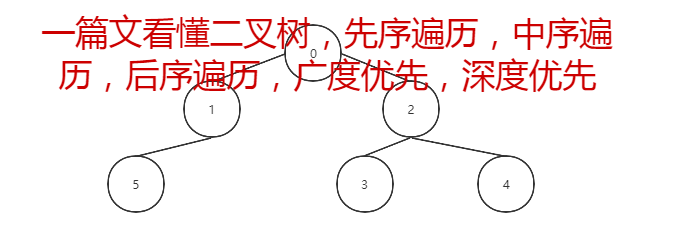0 前言
关于java字节码指令的含义,可以参考这篇博客:Java字节码指令含义解释与指令查询
1 try..catch..finally
1.1 catch
1.1.1 catch单个异常
查看相应的java代码:
1
2
3
4
5
6
7
8
9
10
| public class FinallyDemo {
public static void main(String[] args) {
int i = 10;
try{
i = 20;
}catch (NegativeArraySizeException e){
i = 30;
}
}
}
|
接下来通过javap -v xxx.class命令,来查看该段源码的字节码反编译之后的信息:
1
2
3
4
5
6
7
8
9
10
11
12
13
14
15
16
17
18
19
20
21
22
23
24
25
26
27
28
29
30
31
32
33
34
35
36
37
38
39
40
41
42
43
44
45
46
47
48
49
50
51
52
| {
public com.basic.FinallyDemo();
descriptor: ()V
flags: ACC_PUBLIC
Code:
stack=1, locals=1, args_size=1
0: aload_0
1: invokespecial #1
4: return
LineNumberTable:
line 3: 0
LocalVariableTable:
Start Length Slot Name Signature
0 5 0 this Lcom/basic/FinallyDemo;
public static void main(java.lang.String[]);
descriptor: ([Ljava/lang/String;)V
flags: ACC_PUBLIC, ACC_STATIC
Code:
stack=1, locals=3, args_size=1
0: bipush 10
2: istore_1
3: bipush 20
5: istore_1
6: goto 13
9: astore_2
10: bipush 30
12: istore_1
13: return
Exception table:
from to target type
3 6 9 Class java/lang/NegativeArraySizeException
LineNumberTable:
line 5: 0
line 7: 3
line 10: 6
line 8: 9
line 9: 10
line 11: 13
LocalVariableTable:
Start Length Slot Name Signature
10 3 2 e Ljava/lang/NegativeArraySizeException;
0 14 0 args [Ljava/lang/String;
3 11 1 i I
StackMapTable: number_of_entries = 2
frame_type = 255
offset_delta = 9
locals = [ class "[Ljava/lang/String;", int ]
stack = [ class java/lang/NegativeArraySizeException ]
frame_type = 3
}
SourceFile: "FinallyDemo.java"
|
从反编译之后的字节码信息可以看到,之所以能执行catch中的代码,是因为有一个异常表(exception table)来存放try和catch的执行的起始位置,当检测到try中有异常发生时,跳转到catch中执行。
1.1.2 catch多个异常
先看java源代码:
1
2
3
4
5
6
7
8
9
10
11
12
13
14
15
16
17
| import java.nio.file.FileSystemAlreadyExistsException;
public class FinallyDemo {
public static void main(String[] args) {
int i = 10;
try{
i = 20;
}catch (NegativeArraySizeException e){
i = 30;
}catch (NullPointerException e){
i = 40;
}catch (FileSystemAlreadyExistsException e){
i = 50;
}
System.out.println(i);
}
}
|
源代码对应的字节码指令:
1
2
3
4
5
6
7
8
9
10
11
12
13
14
15
16
17
18
19
20
21
22
23
24
25
26
27
28
29
30
31
32
33
34
35
36
37
38
39
40
41
42
43
44
45
46
47
48
49
50
51
52
53
54
55
56
57
58
59
60
61
62
63
64
65
66
67
68
69
70
71
72
73
74
75
76
77
| {
public com.basic.FinallyDemo();
descriptor: ()V
flags: ACC_PUBLIC
Code:
stack=1, locals=1, args_size=1
0: aload_0
1: invokespecial #1
4: return
LineNumberTable:
line 6: 0
LocalVariableTable:
Start Length Slot Name Signature
0 5 0 this Lcom/basic/FinallyDemo;
public static void main(java.lang.String[]);
descriptor: ([Ljava/lang/String;)V
flags: ACC_PUBLIC, ACC_STATIC
Code:
stack=2, locals=3, args_size=1
0: bipush 10
2: istore_1
3: bipush 20
5: istore_1
6: goto 27
9: astore_2
10: bipush 30
12: istore_1
13: goto 27
16: astore_2
17: bipush 40
19: istore_1
20: goto 27
23: astore_2
24: bipush 50
26: istore_1
27: getstatic #5
30: iload_1
31: invokevirtual #6
34: return
Exception table:
from to target type
3 6 9 Class java/lang/NegativeArraySizeException
3 6 16 Class java/lang/NullPointerException
3 6 23 Class java/nio/file/FileSystemAlreadyExistsException
LineNumberTable:
line 8: 0
line 10: 3
line 17: 6
line 11: 9
line 12: 10
line 17: 13
line 13: 16
line 14: 17
line 17: 20
line 15: 23
line 16: 24
line 18: 27
line 19: 34
LocalVariableTable:
Start Length Slot Name Signature
10 3 2 e Ljava/lang/NegativeArraySizeException;
17 3 2 e Ljava/lang/NullPointerException;
24 3 2 e Ljava/nio/file/FileSystemAlreadyExistsException;
0 35 0 args [Ljava/lang/String;
3 32 1 i I
StackMapTable: number_of_entries = 4
frame_type = 255
offset_delta = 9
locals = [ class "[Ljava/lang/String;", int ]
stack = [ class java/lang/NegativeArraySizeException ]
frame_type = 70
stack = [ class java/lang/NullPointerException ]
frame_type = 70
stack = [ class java/nio/file/FileSystemAlreadyExistsException ]
frame_type = 3
}
|
1.1.3 catch多个异常的简写
这是上一小节中的catch多个异常的简写形式:
1
2
3
4
5
6
7
8
9
10
11
12
13
| import java.nio.file.FileSystemAlreadyExistsException;
public class FinallyDemo {
public static void main(String[] args) {
int i = 10;
try{
i = 20;
}catch (NegativeArraySizeException | NullPointerException | FileSystemAlreadyExistsException e){
i = 30;
}
System.out.println(i);
}
}
|
对应的字节码信息和上一节中的相同:
1
2
3
4
5
6
7
8
9
10
11
12
13
14
15
16
17
18
19
20
21
22
23
24
25
26
27
28
29
30
31
32
33
34
35
36
37
38
39
40
41
42
43
44
45
46
47
48
49
50
51
52
53
54
55
56
57
| {
public com.basic.FinallyDemo();
descriptor: ()V
flags: ACC_PUBLIC
Code:
stack=1, locals=1, args_size=1
0: aload_0
1: invokespecial #1
4: return
LineNumberTable:
line 6: 0
LocalVariableTable:
Start Length Slot Name Signature
0 5 0 this Lcom/basic/FinallyDemo;
public static void main(java.lang.String[]);
descriptor: ([Ljava/lang/String;)V
flags: ACC_PUBLIC, ACC_STATIC
Code:
stack=2, locals=3, args_size=1
0: bipush 10
2: istore_1
3: bipush 20
5: istore_1
6: goto 13
9: astore_2
10: bipush 30
12: istore_1
13: getstatic #5
16: iload_1
17: invokevirtual #6
20: return
Exception table:
from to target type
3 6 9 Class java/lang/NegativeArraySizeException
3 6 9 Class java/lang/NullPointerException
3 6 9 Class java/nio/file/FileSystemAlreadyExistsException
LineNumberTable:
line 8: 0
line 10: 3
line 13: 6
line 11: 9
line 12: 10
line 14: 13
line 15: 20
LocalVariableTable:
Start Length Slot Name Signature
10 3 2 e Ljava/lang/RuntimeException;
0 21 0 args [Ljava/lang/String;
3 18 1 i I
StackMapTable: number_of_entries = 2
frame_type = 255
offset_delta = 9
locals = [ class "[Ljava/lang/String;", int ]
stack = [ class java/lang/RuntimeException ]
frame_type = 3
}
|
1.2 finally
1.2.1 在finally中return *;
查看FinallyDemo.java文件的代码,试问最终输出多少?10? or 20? or 30?
FinallyDemo.java
1
2
3
4
5
6
7
8
9
10
11
12
13
14
15
16
| public class FinallyDemo {
public static void main(String[] args) {
FinallyDemo finallyDemo = new FinallyDemo();
int t = finallyDemo.test();
System.out.println(t);
}
public int test(){
int i = 10;
try {
return 20;
}finally {
return 30;
}
}
}
|
运行结果:

通过对其FinallyDemo.class文件进行反编译,可以分析得到为什么最终结果会是30。为了简化代码,这里就直接将源代码对应的字节码信息粘贴过来。
FinallyDemo.class
1
2
3
4
5
6
7
8
9
10
11
12
13
14
15
16
17
18
19
20
21
22
23
24
25
26
27
28
29
30
31
32
33
34
35
36
37
38
39
40
41
42
43
44
45
46
47
48
49
50
51
52
53
54
55
56
57
58
59
60
61
62
63
64
65
66
67
68
69
70
71
72
73
74
| {
public com.basic.FinallyDemo();
descriptor: ()V
flags: ACC_PUBLIC
Code:
stack=1, locals=1, args_size=1
0: aload_0
1: invokespecial #1
4: return
LineNumberTable:
line 3: 0
LocalVariableTable:
Start Length Slot Name Signature
0 5 0 this Lcom/basic/FinallyDemo;
public static void main(java.lang.String[]);
descriptor: ([Ljava/lang/String;)V
flags: ACC_PUBLIC, ACC_STATIC
Code:
stack=2, locals=3, args_size=1
0: new #2
3: dup
4: invokespecial #3
7: astore_1
8: aload_1
9: invokevirtual #4
12: istore_2
13: getstatic #5
16: iload_2
17: invokevirtual #6
20: return
LineNumberTable:
line 5: 0
line 6: 8
line 7: 13
line 8: 20
LocalVariableTable:
Start Length Slot Name Signature
0 21 0 args [Ljava/lang/String;
8 13 1 finallyDemo Lcom/basic/FinallyDemo;
13 8 2 t I
public int test();
descriptor: ()I
flags: ACC_PUBLIC
Code:
stack=1, locals=4, args_size=1
0: bipush 10
2: istore_1
3: bipush 20
5: istore_2
6: bipush 30
8: ireturn
9: astore_3
10: bipush 30
12: ireturn
Exception table:
from to target type
3 6 9 any
LineNumberTable:
line 11: 0
line 13: 3
line 15: 6
LocalVariableTable:
Start Length Slot Name Signature
0 13 0 this Lcom/basic/FinallyDemo;
3 10 1 i I
StackMapTable: number_of_entries = 1
frame_type = 255
offset_delta = 9
locals = [ class com/basic/FinallyDemo, int ]
stack = [ class java/lang/Throwable ]
}
SourceFile: "FinallyDemo.java"
|
1.2.2 在finally中使用return的弊端
使用try..catch捕捉程序异常,但是有些时候,catch不能将所有的异常都捕捉到,此时那些没有被catch捕捉到的异常就会在finally中被再次捕捉到,这样就提高了程序运行的安全性。但是当在finally中使用return语句后,那么finally就会将其他的异常”吞掉“,也就是不再捕捉catch中没有被捕捉的异常。
1.2.2.1 finally中没有加return语句:
1
2
3
4
5
6
7
8
9
10
11
12
| public class FinallyDemo {
public static void main(String[] args) {
int i = 10;
try{
i = 20;
}catch (NegativeArraySizeException e){
e.printStackTrace();
}finally {
i = 30;
}
}
}
|
为了简便,这里主要粘贴源代码对应的字节码信息:
1
2
3
4
5
6
7
8
9
10
11
12
13
14
15
16
17
18
19
20
21
22
23
24
25
26
27
28
29
30
31
32
33
34
35
36
37
38
39
40
41
42
43
44
45
46
47
48
49
50
51
52
53
54
55
56
57
58
59
60
61
62
63
64
65
66
67
68
69
70
| {
public com.basic.FinallyDemo();
descriptor: ()V
flags: ACC_PUBLIC
Code:
stack=1, locals=1, args_size=1
0: aload_0
1: invokespecial #1
4: return
LineNumberTable:
line 3: 0
LocalVariableTable:
Start Length Slot Name Signature
0 5 0 this Lcom/basic/FinallyDemo;
public static void main(java.lang.String[]);
descriptor: ([Ljava/lang/String;)V
flags: ACC_PUBLIC, ACC_STATIC
Code:
stack=1, locals=4, args_size=1
0: bipush 10
2: istore_1
3: bipush 20
5: istore_1
6: bipush 30
8: istore_1
9: goto 29
12: astore_2
13: aload_2
14: invokevirtual #3
17: bipush 30
19: istore_1
20: goto 29
23: astore_3
24: bipush 30
26: istore_1
27: aload_3
28: athrow
29: return
Exception table:
from to target type
3 6 12 Class java/lang/NegativeArraySizeException
3 6 23 any
12 17 23 any
LineNumberTable:
line 5: 0
line 7: 3
line 11: 6
line 12: 9
line 8: 12
line 9: 13
line 11: 17
line 12: 20
line 11: 23
line 12: 27
line 13: 29
LocalVariableTable:
Start Length Slot Name Signature
13 4 2 e Ljava/lang/NegativeArraySizeException;
0 30 0 args [Ljava/lang/String;
3 27 1 i I
StackMapTable: number_of_entries = 3
frame_type = 255
offset_delta = 12
locals = [ class "[Ljava/lang/String;", int ]
stack = [ class java/lang/NegativeArraySizeException ]
frame_type = 74
stack = [ class java/lang/Throwable ]
frame_type = 5
}
|
1.2.2.2 finally中加了return语句
1
2
3
4
5
6
7
8
9
10
11
12
13
14
15
| public class FinallyDemo {
public static void main(String[] args) {
int j = test();
System.out.println(j);
}
public static int test(){
int i = 0;
try{
return 10;
}finally {
return 20;
}
}
}
|
源代码对应的字节码:
1
2
3
4
5
6
7
8
9
10
11
12
13
14
15
16
17
18
19
20
21
22
23
24
25
26
27
28
29
30
31
32
33
34
35
36
37
38
39
40
41
42
43
44
45
46
47
48
49
50
51
52
53
54
55
56
57
58
59
60
61
62
63
64
65
| {
public com.basic.FinallyDemo();
descriptor: ()V
flags: ACC_PUBLIC
Code:
stack=1, locals=1, args_size=1
0: aload_0
1: invokespecial #1
4: return
LineNumberTable:
line 6: 0
LocalVariableTable:
Start Length Slot Name Signature
0 5 0 this Lcom/basic/FinallyDemo;
public static void main(java.lang.String[]);
descriptor: ([Ljava/lang/String;)V
flags: ACC_PUBLIC, ACC_STATIC
Code:
stack=2, locals=2, args_size=1
0: invokestatic #2
3: istore_1
4: getstatic #3
7: iload_1
8: invokevirtual #4
11: return
LineNumberTable:
line 8: 0
line 9: 4
line 10: 11
LocalVariableTable:
Start Length Slot Name Signature
0 12 0 args [Ljava/lang/String;
4 8 1 j I
public static int test();
descriptor: ()I
flags: ACC_PUBLIC, ACC_STATIC
Code:
stack=1, locals=3, args_size=0
0: iconst_0
1: istore_0
2: bipush 10
4: istore_1
5: bipush 20
7: ireturn
8: astore_2
9: bipush 20
11: ireturn
Exception table:
from to target type
2 5 8 any
LineNumberTable:
line 13: 0
line 15: 2
line 17: 5
LocalVariableTable:
Start Length Slot Name Signature
2 10 0 i I
StackMapTable: number_of_entries = 1
frame_type = 255
offset_delta = 8
locals = [ int ]
stack = [ class java/lang/Throwable ]
}
|
我们从字节码中可以看到,finally中并没有捕捉异常,也没有抛出异常,所以此种写法对于程序而言非常危险。下面看一段错误代码,但是程序并没有抛出异常:
1
2
3
4
5
6
7
8
9
10
11
12
13
14
15
16
| public class FinallyDemo {
public static void main(String[] args) {
int j = test();
System.out.println(j);
}
public static int test(){
int i = 1;
try{
i = i / 0;
return i;
}finally {
return i;
}
}
}
|
运行结果:

所以,在写代码时,一定要主要不要写出这样的代码。
写在最后
欢迎大家关注鄙人的公众号【麦田里的守望者zhg】,让我们一起成长,谢谢。

















